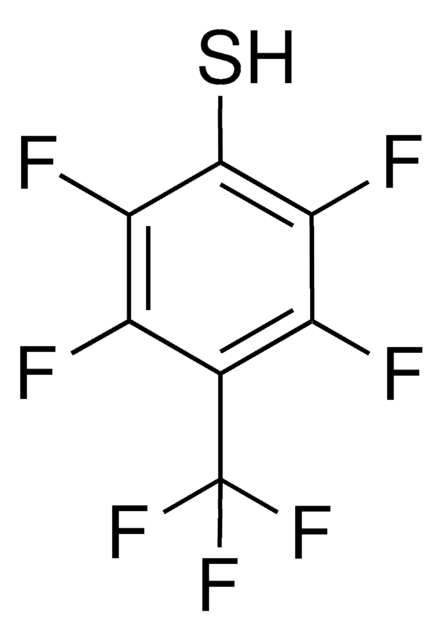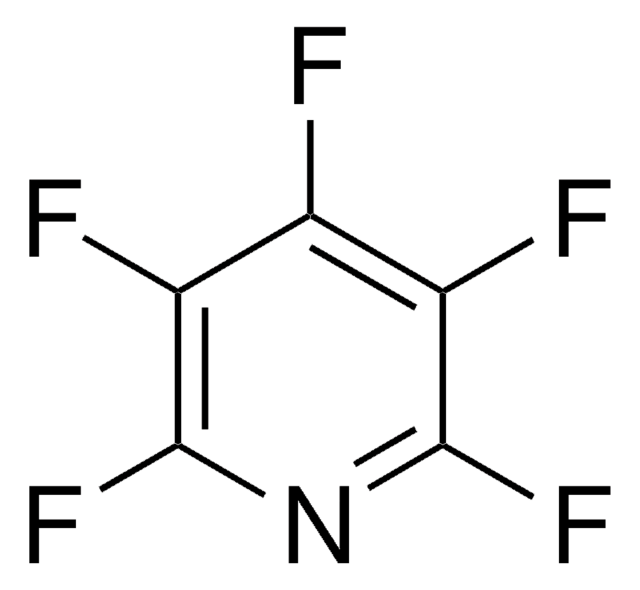193666
Chloropentafluorobenzene
99%
Sélectionner une taille de conditionnement
88,00 $
Sélectionner une taille de conditionnement
About This Item
88,00 $
Produits recommandés
Essai
99%
Forme
liquid
Indice de réfraction
n20/D 1.424 (lit.)
pb
122-123 °C/750 mmHg (lit.)
Densité
1.568 g/mL at 25 °C (lit.)
Groupe fonctionnel
chloro
fluoro
Chaîne SMILES
Fc1c(F)c(F)c(Cl)c(F)c1F
InChI
1S/C6ClF5/c7-1-2(8)4(10)6(12)5(11)3(1)9
Clé InChI
KGCDGLXSBHJAHZ-UHFFFAOYSA-N
Vous recherchez des produits similaires ? Visite Guide de comparaison des produits
Description générale
Mention d'avertissement
Danger
Mentions de danger
Conseils de prudence
Classification des risques
Acute Tox. 3 Inhalation
Code de la classe de stockage
6.1C - Combustible acute toxic Cat.3 / toxic compounds or compounds which causing chronic effects
Classe de danger pour l'eau (WGK)
WGK 2
Équipement de protection individuelle
Eyeshields, Faceshields, Gloves, multi-purpose combination respirator cartridge (US)
Faites votre choix parmi les versions les plus récentes :
Déjà en possession de ce produit ?
Retrouvez la documentation relative aux produits que vous avez récemment achetés dans la Bibliothèque de documents.
Les clients ont également consulté
Active Filters
Notre équipe de scientifiques dispose d'une expérience dans tous les secteurs de la recherche, notamment en sciences de la vie, science des matériaux, synthèse chimique, chromatographie, analyse et dans de nombreux autres domaines..
Contacter notre Service technique













